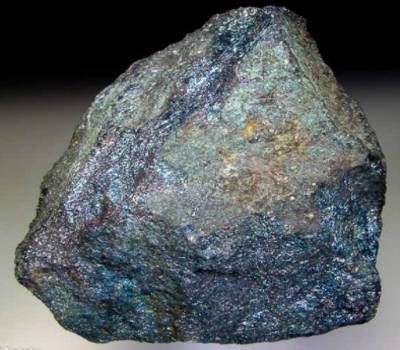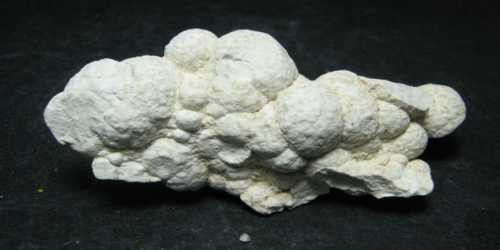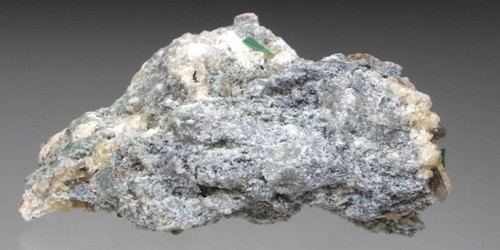Bornite, also known as peacock ore, is a sulfide mineral with chemical composition Cu5FeS4 that crystallizes in the orthorhombic system (pseudo-cubic). It was named after Ignaz Edler von Born (1742–1791), a distinguished Austrian mineralogist. This mineral is also referred to as peacock ore. Good crystals are rare and thus bornite is commonly known as simply a massive mineral ore.
Bornite has a brown to copper-red color on fresh surfaces that tarnishes to various iridescent shades of blue to purple in places. Its striking iridescence gives it the nickname peacock copper or peacock ore.
General Information
- Category: Sulfide mineral
- Formula: Cu5FeS4
- Crystal system: Orthorhombic
- Crystal class: Dipyramidal (mmm).

Properties
Bornite can be identified in the field by its color variations of copper red, bronze brown and purple. Its opaque form has {111} imperfect cleavage. This mineral has a metallic luster with a grayish black streak. The fracture of this mineral is conchoidal. The density of bornite is 4.9 – 5.3 g/cm3 with a hardness of 3 – approximate to calcite. It is non-fluorescent and magnetic after heating.
- Formula mass: 501.88 g/mol
- Color: Copper red, bronze brown, purple
- Crystal habit: Granular, massive, disseminated – Crystals pseudocubic, dodecahedral, octahedral
- Cleavage: Poor on [111].
- Fracture: Uneven to sub-conchoidal; brittle
- Tenacity: Brittle
- Mohs scale hardness: 3 – 3.25
- Luster: Metallic if fresh, iridescent tarnish
- Streak: grayish black
- Specific gravity: 5.06 – 5.08
Occurrence
It occurs globally in copper ores with notable crystal localities in Butte, Montana and at Bristol, Connecticut in the U.S. It is also collected from the Carn Brea mine, Illogan, and elsewhere in Cornwall, England. Large crystals are found from the Frossnitz Alps, Eastern Tirol, Austria; the Mangula mine, Lomagundi district, Zimbabwe; from the N’ouva mine, Talate, Morocco, the West Coast of Tasmania and in Dzhezkazgan, Kazakhstan. There are also traces of it found amongst the hematite in the Pilbara region of Western Australia.
Bornite is associated with and disseminated in, mafic igneous rocks, pegmatites, medium-to high-temperature hydrothermal deposits, contact metamorphic skarn deposits and in sedimentary cupriferous shales.
Information Source:
















